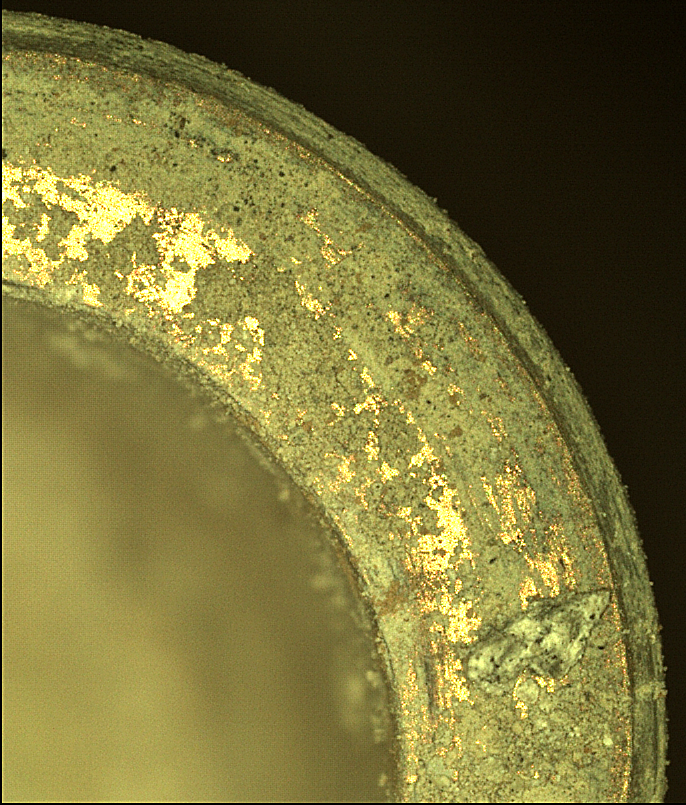A new sample hole aside an earlier abrasion patch at site 69.0, imaged on Sol 1420 (Feb 17, 2025). This partial Front HazCam was cropped and roughly processed from 2 tiles. More images will arrive soon to provide a wider view. The CacheCam images will be eagerly awaited to see if they managed to retain a rock sample, having lost the rock cores in the last two attempts.
Credits: NASA/JPL-Caltech
Looks like Mars is populated by huge sand worms. This is so cool I will refuse to believe anything else. (/s)
Tremors on Mars!
The lack of a visual clue in size (e. g. a banana) adds to the experience.
Seriously, NASA should make the rover drop a plastic banana on future missions. Add a string for easy retrievability.
Mars guy on YouTube does show scale either with himself “Here’s Mars guy for scale” or with a coin for the samples recently.
The coring seems to have been successful on this occasion.
For reference, the abrasion patch on the right is the latest one (#35), the fourth taken here at Witch Hazel Hill. I do hope that forthcoming mission updates will share more, at least qualitatively, about the drill data for all the recent coring attempts. It would be pretty illuminating to know which rocks have required the most time and force, given the sampling failures and unpredictable nature of the geology here.
Looks like a fairly full tube in that image :)
Fingers crossed for a mission update ASAP
It should be possible to estimate the time to drill all the sample core, but we won’t know how high the settings were for the percussion unless they reveal that in science papers AFAIK that data is not released in the PDS unless covered in the sample dossiers :)
The coring seems to have been successful on this occasion.
Huzzah!
Dust is partially obscuring the serial number of the tube, but from what we can see it looks highly likely they reused #060 :)

Fore!



